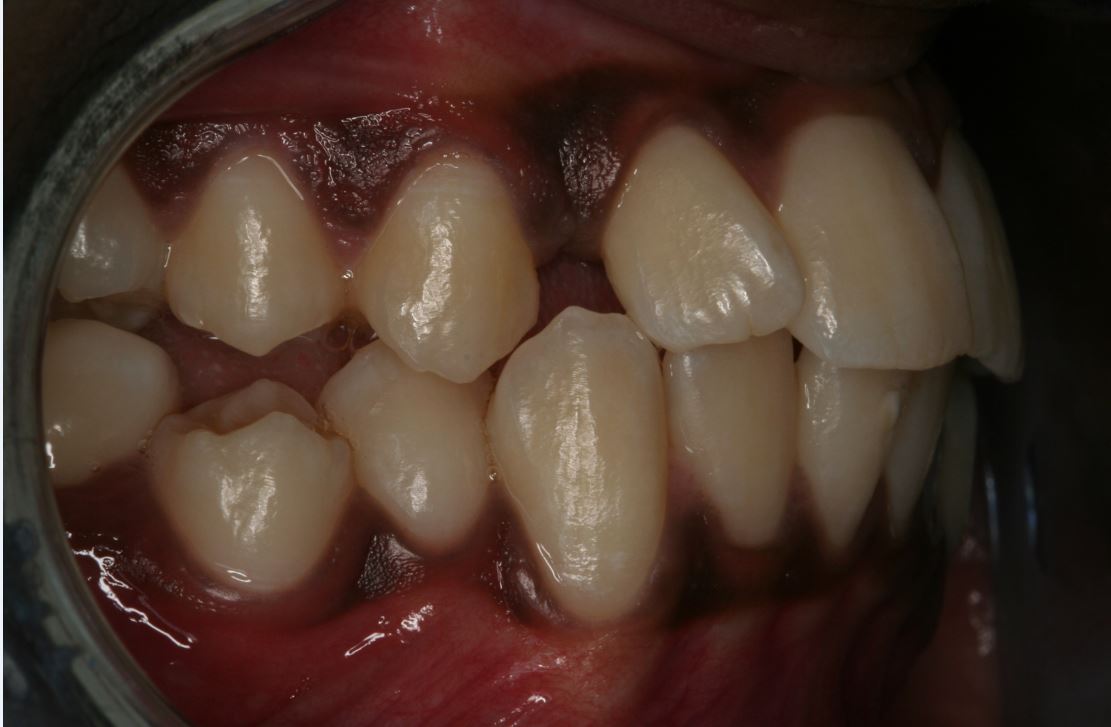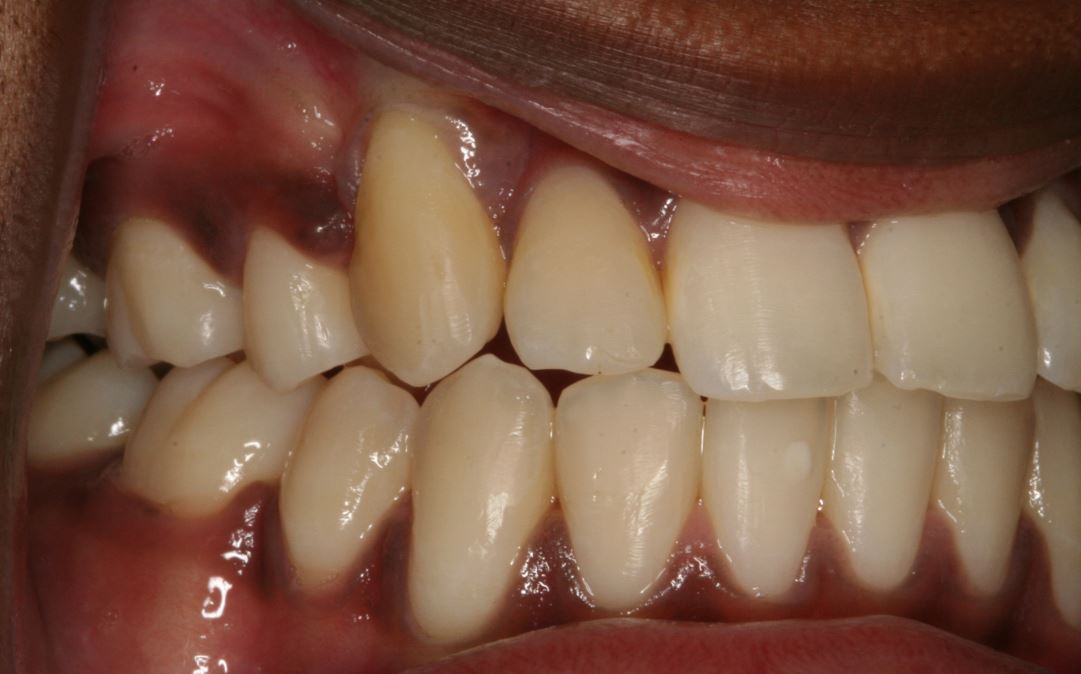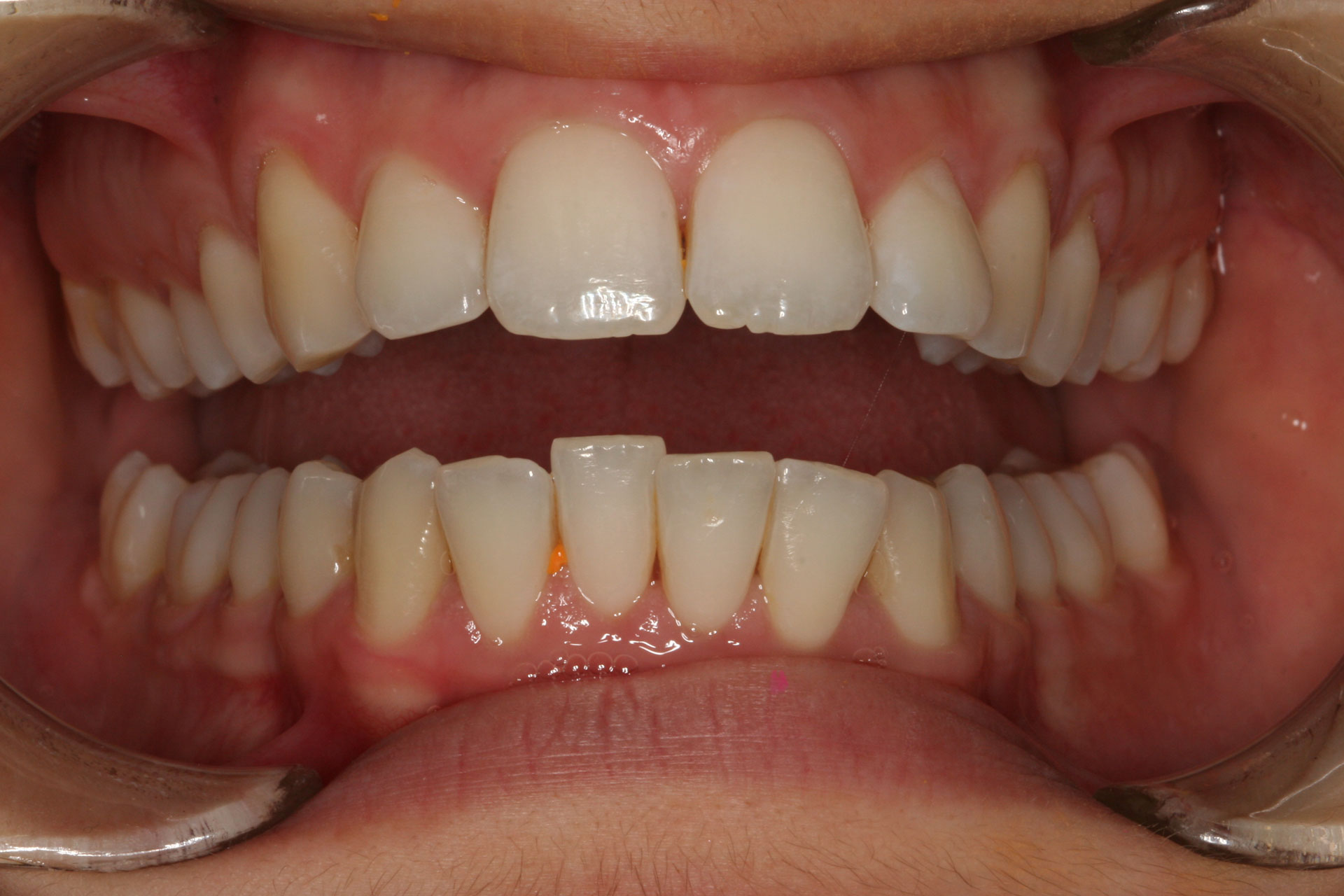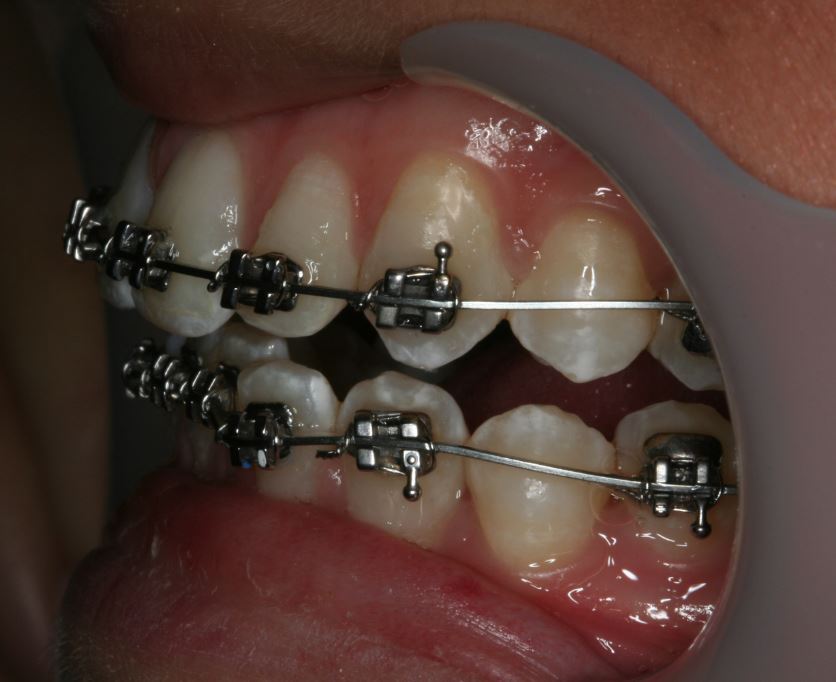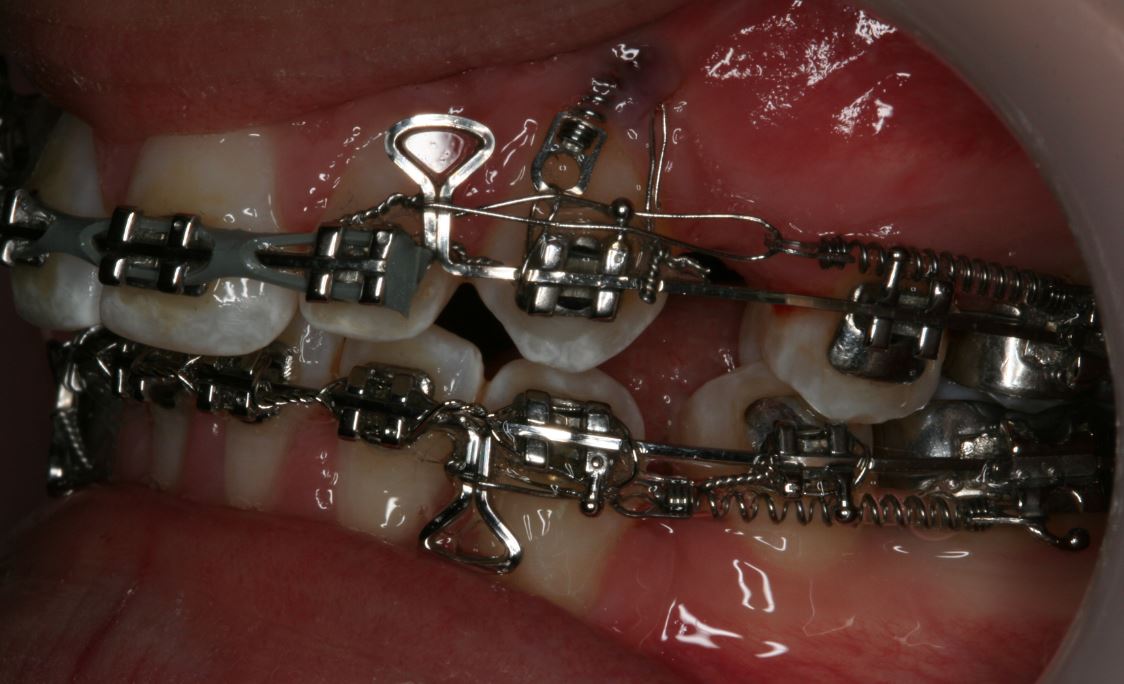Orthodontic treatment options in our Melbourne dental clinic
If you’ve decided to have orthodontics at our Essendon dental clinic, you’ll know what an important step you’re taking towards improving the look of your teeth. And if you’re already wearing braces, no doubt you’re looking forward to the day they come off and you can reveal your beautiful straight teeth! But the benefits of orthodontic treatment go way beyond looks.
Orthodontic Services
You know that you or your child need braces and there are many options available. Your FirstBite dentist will explore these options with you and provide a recommendation for the best course of action. Our range of braces at our Essendon dental clinic includes traditional metal braces, Invisalign and ClearCorrect (clear braces). We can create a tailored payment plan to accommodate any concerns about the cost of braces.

What is orthodontics?
Orthodontics is a specialised field of dentistry that corrects jaw function and improperly aligned teeth. Orthodontic treatment can help improve the appearance, function, and longevity of teeth and gums, as well as improving overall oral health.
Common orthodontic treatments at our Essendon dental practice include braces, aligners (clear braces), retainers and other appliances that apply gentle pressure to move teeth into their correct positions over time.
Orthodontic treatment is used to correct issues such as:
- Crowding and spacing of teeth
- Overbites, underbites and crossbites
- Misplaced midline
Why do I need orthodontic treatment?
People of all ages choose to undergo orthodontic treatment primarily for cosmetic reasons, but what the dentist is looking at is the proper alignment of your teeth and jawline.
Crooked or crowded teeth may cause uneven wear of tooth surfaces or jaw problems that can lead to complications later in life. An incorrectly aligned bite and jaw can also lead to TMJ disorder, often resulting in headaches, neck and shoulder pain.
They can also be difficult to clean properly, which makes them prone to tooth decay and gum disease resulting in bad breath. When your teeth are in the correct position, brushing and flossing are made much easier.
So, while you’re wearing braces, remember that the success of your treatment is affected by how well you care for your teeth and gums. Good oral care at home involves effectively removing plaque from your teeth, gums and braces every day. Not only will it keep your treatment time on course, but it will also contribute to the continued health of your teeth and gums.

Braces orthodontic options
There are alternatives to what type of braces can be placed onto your teeth.
- The traditional metal brackets are still commonly used as they are the most effective in moving teeth.
- For those people who want their orthodontics less obvious, then tooth-coloured brackets are a great alternative, for a fractional extra cost.
- Invisalign Clear Aligners or ClearCorrect are also options that can help straighten your teeth without being as obvious as traditional metal braces. Instead, a series of clear aligners move your teeth into the desired position, resulting in straight teeth without metal braces.
For more information on the types of braces, visit our Braces page.
Metal Braces or Clear Braces?
This is a process that will need to be reviewed and discussed with your FirstBite Dental dentist. To give you a visual insight into the experience, view examples of orthodontics in the Orthodontic Case Studies.
What are gummy smiles and peg laterals?
Not all orthodontic treatment includes braces treatment. We also treat orthodontic issues such as:
Gummy smile – a condition where excessive amounts of gum tissue covers teeth.
Peg laterals – a condition where teeth either side of the front teeth do not develop properly.
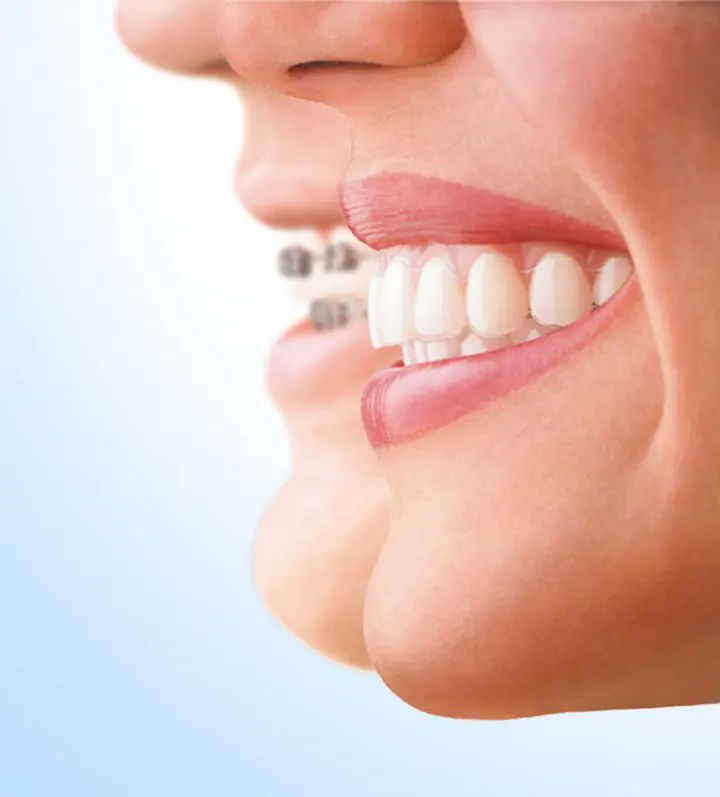

When can a child begin orthodontics?
It is most common to start investigating orthodontic treatment when children are 7–12 years of age. We have children of all ages visit our Hygiene Department for regular check ups so they are screened from a young age to monitor the development of their permanent teeth.
Early preventative treatment can in some cases reduce or eliminate the need for braces later in life. Visit our Kids Orthodontics page for more information.
Straight teeth without surgery
Sometimes surgery, including teeth removal, is coupled with braces treatment to assist in achieving optimal oral health and orthodontic outcomes.
However, we have successfully treated many patients without the use of surgery who have come to us for a second opinion after being told orthognathic surgery was compulsory in order to correct their orthodontic problems.
Surgery is sometimes an option, but not always necessary. We are able to provide a non-surgical solution in many cases.
This patient below was previously told that surgery was the only option to correct their orthodontic problems. Their FirstBite orthodontic treatment proceeded without orthognathic surgery.
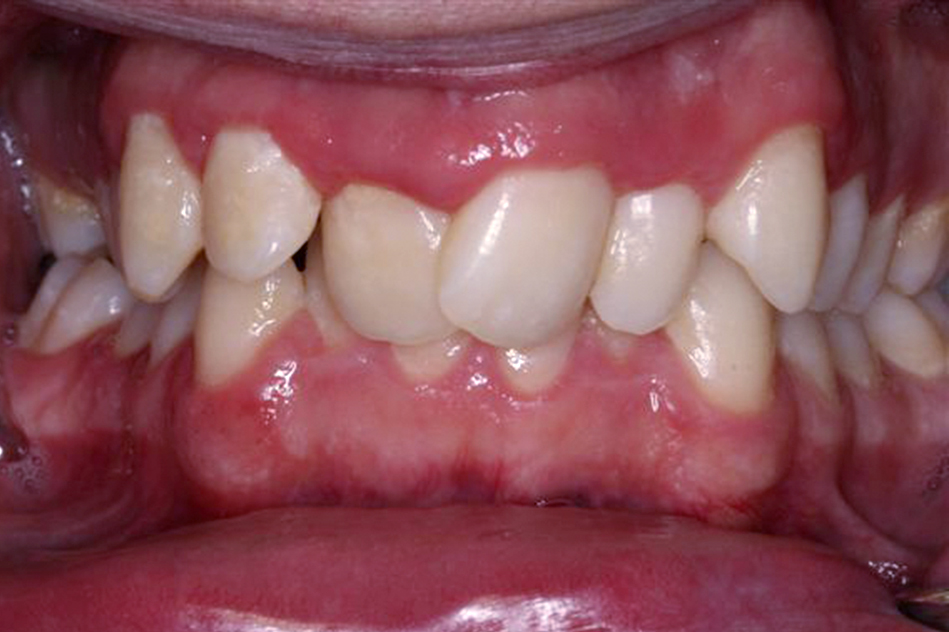
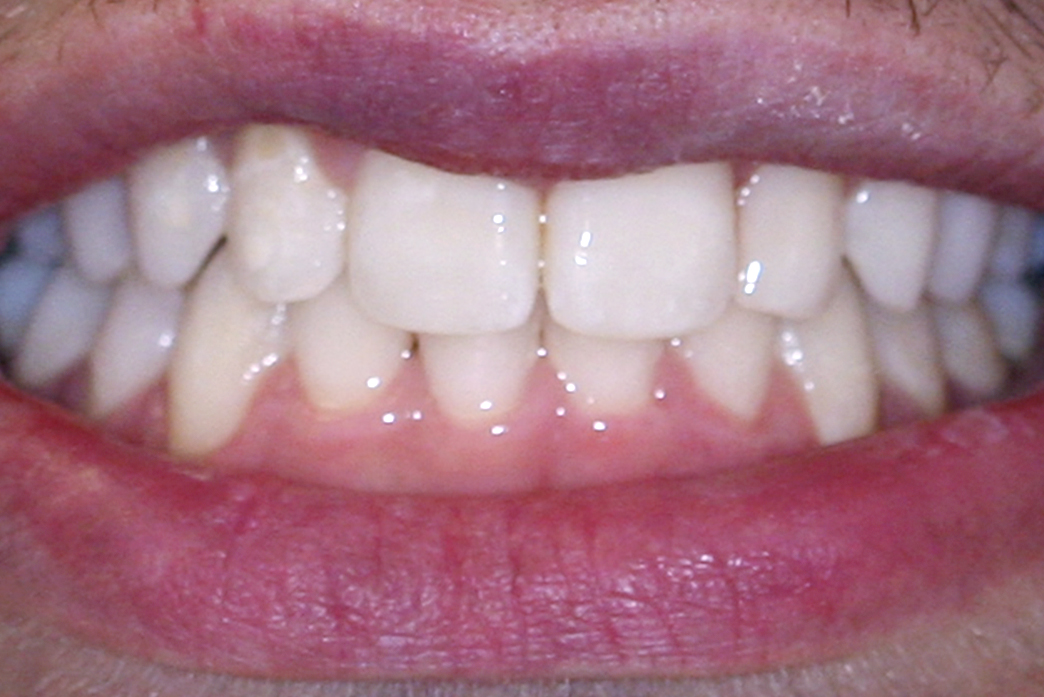
FAQs About Orthodontics
How do I know if I need braces for my teeth?
Not surprisingly, the patients who walk through the door and say they need braces are doing so because they want a straight smile. And if that is what will make them feel happier with themselves then that’s a great choice.
From the other side of the view, your dentist is looking at your teeth and jawline and assessing if they are aligned and whether not fixing them could present more issues as you age. It’s our responsibility to let you know that treatment will benefit your in the long term.
How often do I need to visit the dentist during orthodontic treatment?
During orthodontic treatment, visits are scheduled depending what treatment you are receiving. If you have fixed metal braces you will visit every 6–8 weeks, however if you have ClearCorrect or Invisalign you will be required to visit every 2–4 weeks. It is also important to maintain your 6 monthly dental hygiene visits.
How long does orthodontic treatment take?
Orthodontic treatment at our dental clinic in Essendon can take anywhere from a few months up to 2–3 years for more complex cases. At your initial consultation, we will be able to give you an estimate timeframe of the treatment time.
What is a retainer?
Retainers are worn once orthodontic treatment is completed. The gums and bone need time to adapt to the way the teeth are aligned. Retainers can be a combination of removable or fixed, and depends on each person’s individual dental requirements.
How much do braces cost?
At your initial consultation, we will discuss the range of options that are available and the costs associated with it.
Are braces payment plans available at FirstBite Dental?
Yes of course. We require an initial deposit is required, with the balance of the price paid monthly over the course of the orthodontic treatment.
Learn more on our Dental Payment Plans page under Pricing and Payment in the menu.
Orthodontic Case Studies
Orthodontics will straighten your teeth. Whether you choose metal or clear braces, or invisible retainers, we can help you to have the smile you dream of. The biggest satisfaction for us comes from the change that this can have on a person’s life. The confidence that comes from being able to smile broadly has had a significant impact on many of our patients. Orthodontic treatment can give you much more than a straight smile.
Before & After: Orthodontics & Canine Exposure Surgery
This Essendon patient came to us with a complicated dental and orthodontic situation, which required surgery to expose an impacted canine tooth. We then needed to include the tooth in metal braces treatment.
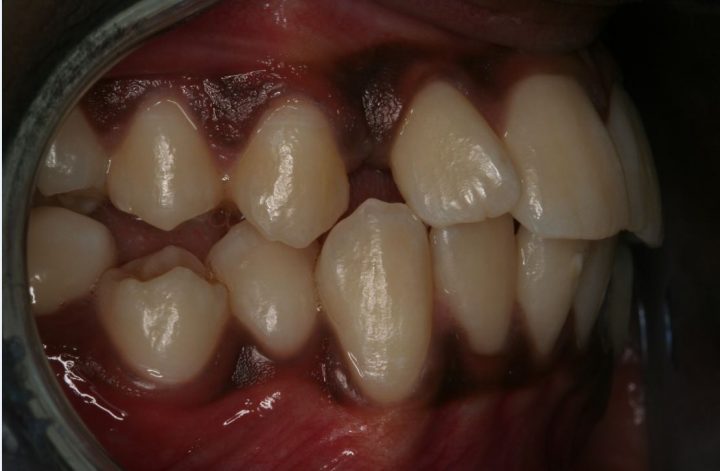

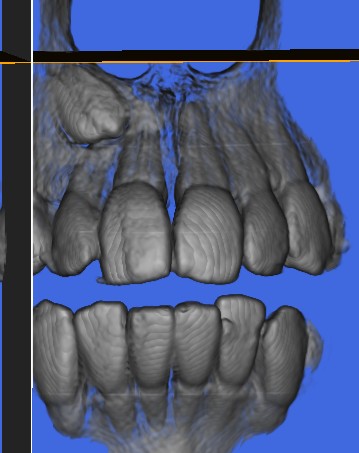
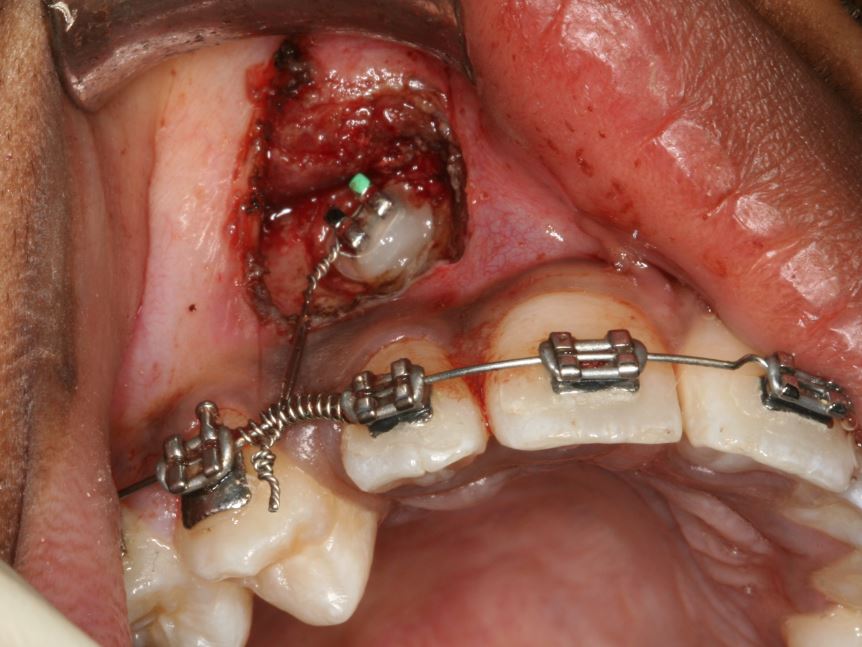
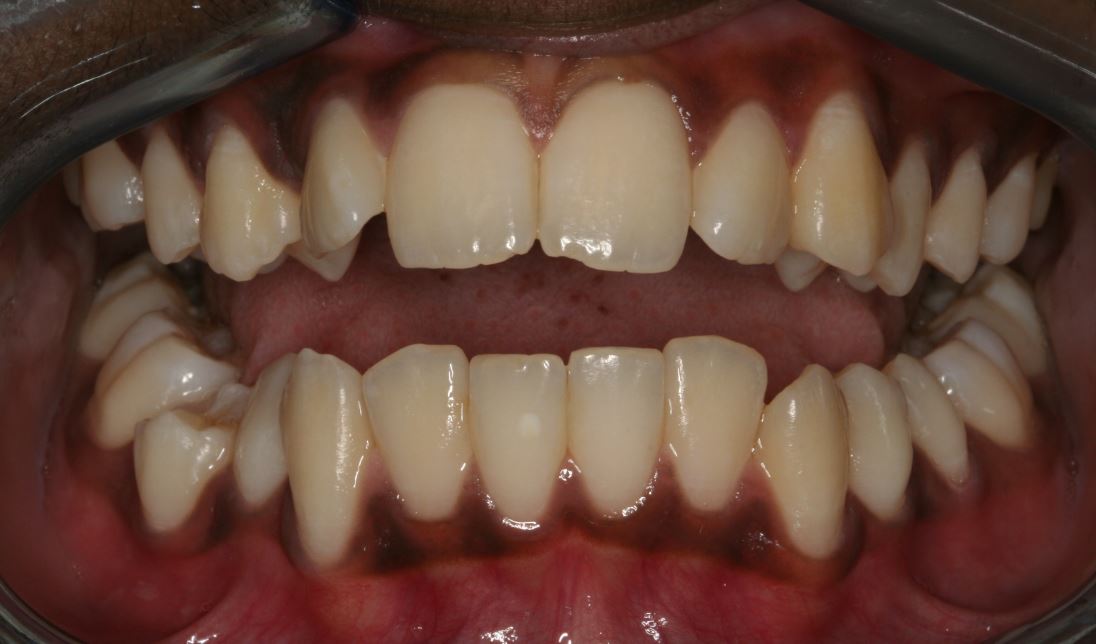
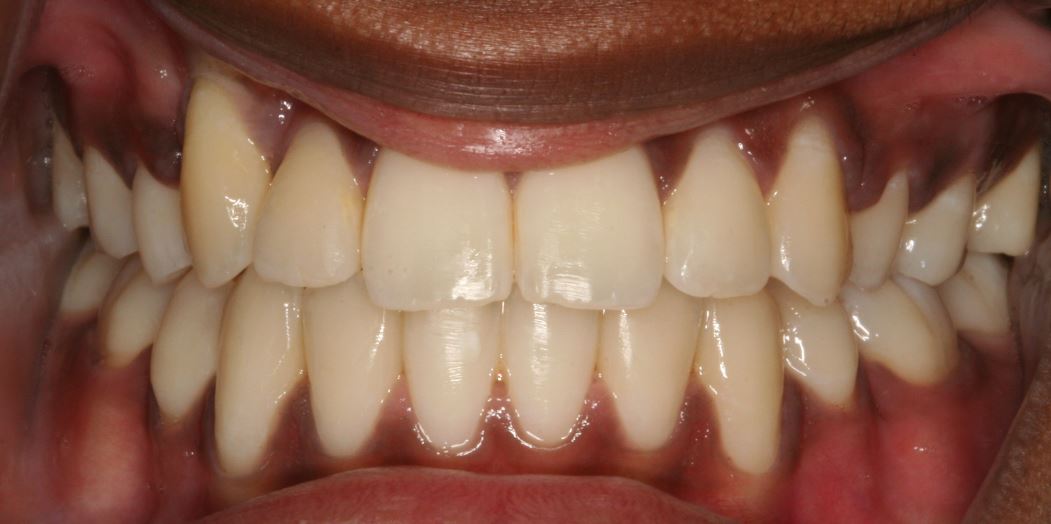
Problem
The patient’s teeth weren’t properly aligned, and he wanted them to be straight. 3D scans showed his upper jaw had a canine tooth which hadn’t erupted. We found the canine lodged underneath the gums, impacting nearby teeth and causing movement problems and potential pain.
Treatment
Under local anaesthetic, we surgically removed the gum tissue surrounding the impacted canine tooth, so it was exposed. The next step was to apply traditional metal braces bracket to all the teeth, including the exposed canine, which moved into the same alignment as the existing teeth.
Treatment Time
3 years
Before & After: Orthodontics & Implants
This Airport West patient had misaligned teeth which were drifting backwards. She had also lost some teeth at the back of her mouth.
We provided the patient with information about all available options. We jointly decided on orthodontic braces to straighten the teeth, and two dental implants to fill the gaps caused by the lost teeth.
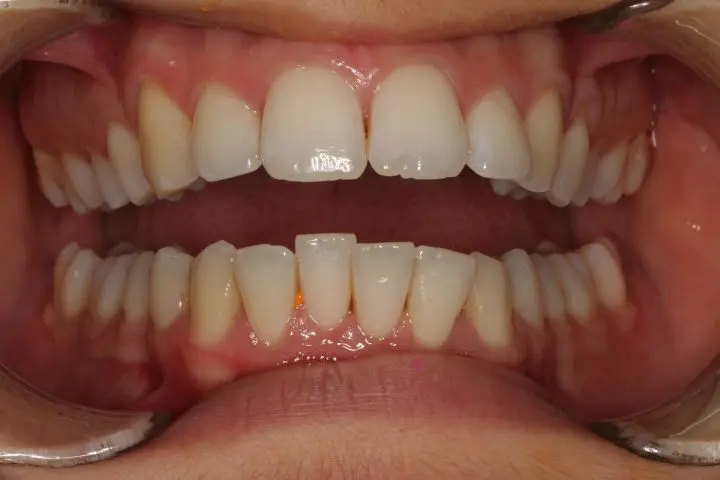
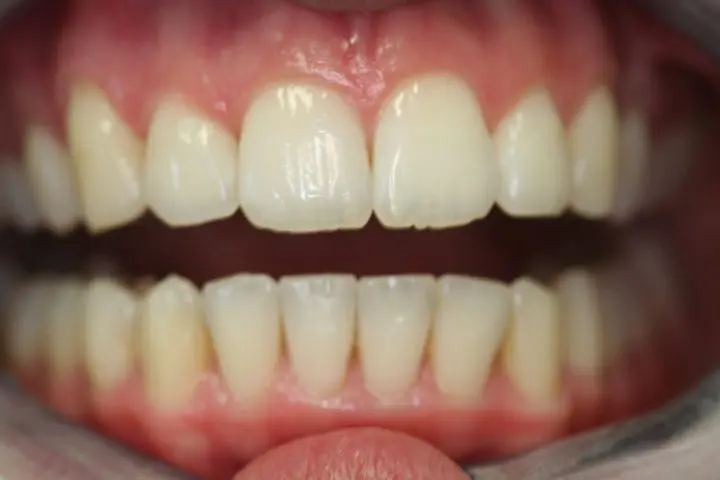
Problem
The patient lost teeth at the back of her mouth, and her front teeth were gradually moving backwards.
Both situations were causing misalignment issues and pain. In addition, her chewing function was also negatively affected.
Treatment
We began the orthodontic process by applying traditional metal braces to straighten the teeth. We regularly saw the patient to monitor movement and adjust the wires as needed.
We also affixed two dental implants to replace the missing teeth at the back of her mouth. Both treatments also prevented the teeth from future backwards movement
Treatment Time
12 months for the braces (the implants are permanent).
Before & After: Extraction Orthodontics with a Displaced Canine
This Niddrie patient had baby teeth that never fell out. However, retaining the baby teeth caused her teeth to become crooked, and prevented an adult canine tooth from erupting properly. She came to us to remove the baby teeth, realign the canine tooth and to straighten her adult teeth using metal braces.
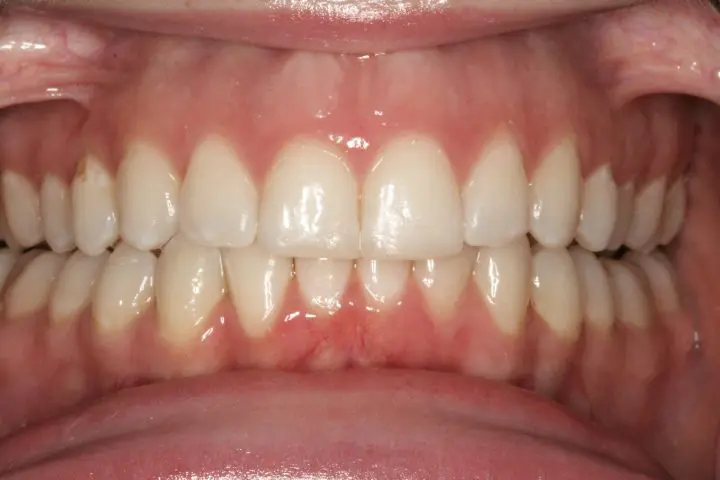
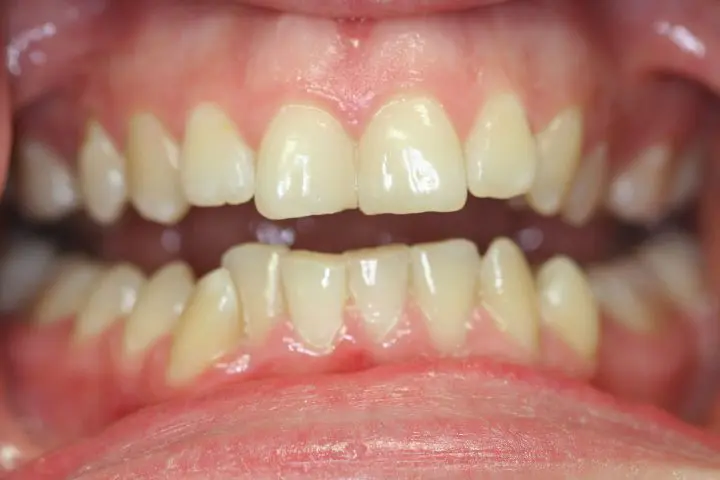


Problem
As this patient had baby teeth that she never lost, they were causing problems for some other teeth needing to appear. In particular, an adult canine tooth became impacted in her palate. The adult canine tooth was not growing in the same alignment as her existing adult teeth. As a result, the patient began to experience pain and problems with chewing.
Treatment
We began treatment by extracting the baby teeth under local anaesthetic. The next phase of the treatment involved placing traditional metal braces across all teeth, including the impacted canine tooth which was residing in the palate. After a series of appointments where we monitored brackets, adjusted wires and examined the alignment, the patient had the straight teeth she needed.
Treatment Time
30 months
Before & After: Orthodontics with Premolar Extractions
Here’s a patient who came to us from Keilor East with significant overcrowding on both upper and lower jaws.
He was concerned that if action wasn’t taken soon, his teeth wouldn’t be able to function properly. He was also worried about how his teeth would look in the future.




Problem
This patient’s teeth were becoming severely misaligned due to overcrowding. Apart from the appearance factor, the patient was experiencing pain and problems with chewing. We worked out that we would need to remove four premolar teeth (responsible for helping transfer food from the chewing stage to the grinding stage of eating).
Extracting the premolars would reduce the crowding issue, making it easier to realign the teeth using traditional metal braces.
Treatment
We began the process by extracting the four premolar teeth (two from the upper jaw and two from the lower jaw) using local anaesthetic. After the gum tissue around the extracted areas had healed, we began the orthodontic process. We applied metal brackets to the teeth and connected them with wire. He visited us regularly for monitoring and adjustment.
Treatment Time
24 months
Before & After: Orthodontic Treatment for a Smile Lift
This Niddrie patient came to see us to correct her deep bite.
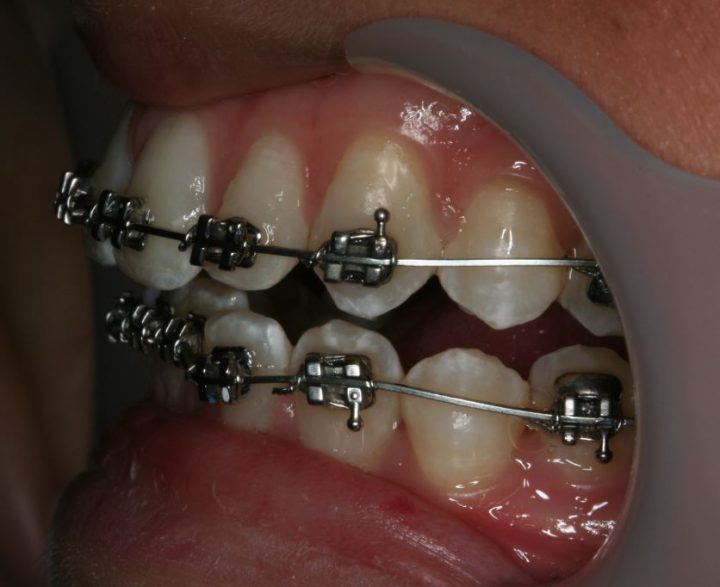
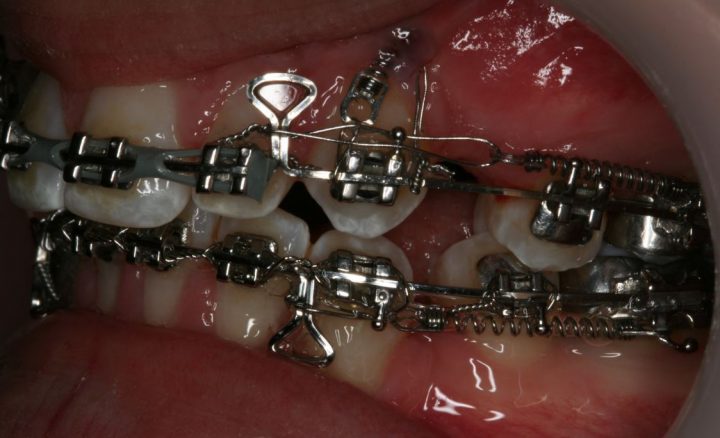
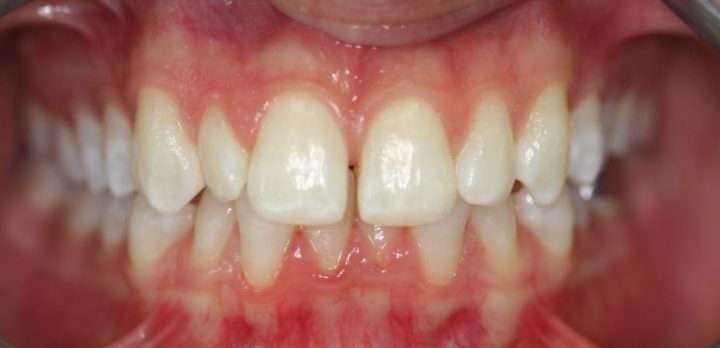
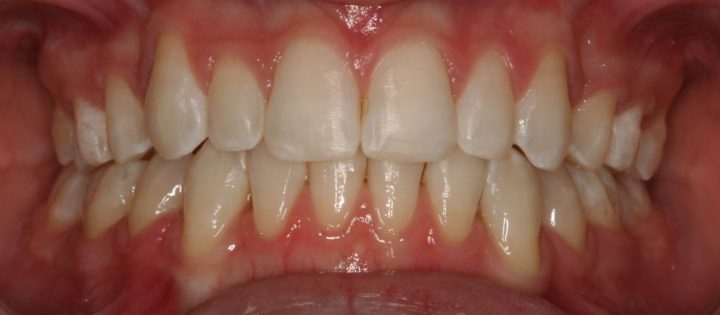
Problem
This patient had a deep bite, and was concerned that, without attention, her teeth would move further and make her bite more pronounced.
Treatment
We undertook pin surgery to lift the smile, and applied traditional metal braces to move the teeth to the correct bite position.
Treatment Time
24 months
Before & After: Orthodontics & Gum Surgery for a Low Upper Jaw
This Essendon patient presented with a complex orthodontic scenario, where her upper jaw was significantly low.
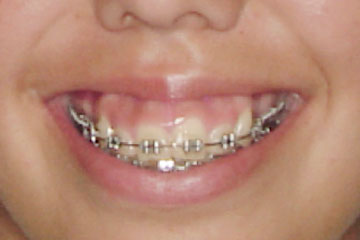
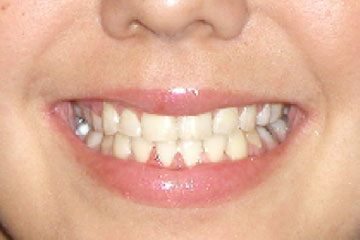
Problem
Her upper jaw was too low, causing misalignment problems and leading to chewing dysfunction.
The patient was also unhappy with the appearance, causing a reduction in confidence.
Treatment
We applied orthodontic pins, and over time with gradual tightening, the pins effectively lift the jawline. With the use of the pins, the upper teeth and jawline absorb back into the skeletal structure.
It sounds complex, but it’s a relatively simple and highly effective process. Just as braces shift the teeth and jawline, this case study applies the same process, but in a different way.
Treatment Time
Up to 2 years
Please Note: These before and after pictures are an example of what can be achieved. Please speak to an appropriately qualified dental health practitioner, even if it is for a second opinion, for options and what results you can expect to achieve. Your own results and the length of treatment will vary depending on your existing dental condition and other factors which can change the complexity of any procedure.
Arrange an appointment right now
Start the process of achieving a better smile today by arranging an appointment. Just call us or if out of hours use our simple request a callback from and we will call you back when we are open.
Call 9379 1893
"*" indicates required fields




